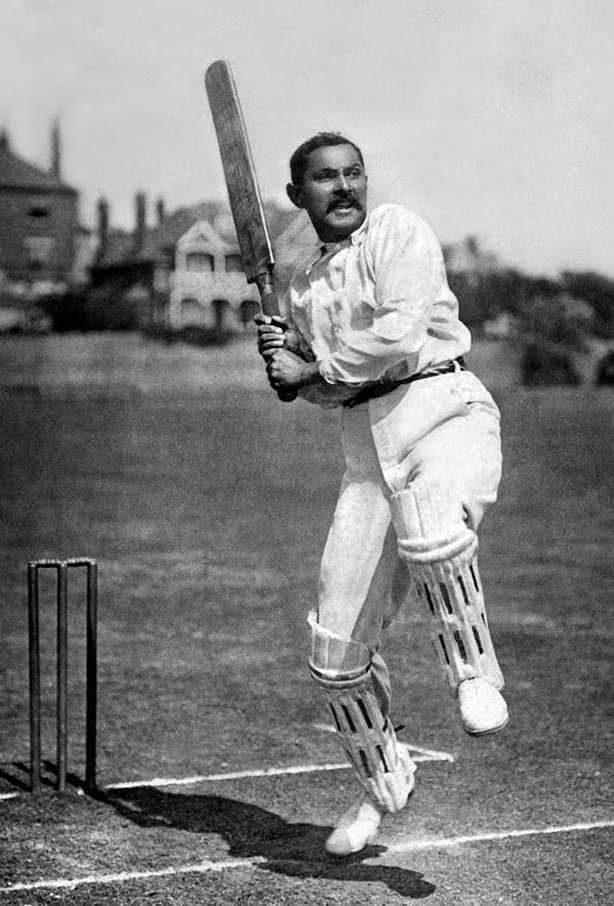#memory
K S Ranjit Singhji.
2 April 1933 is the death anniversary of Sir K S Ranjit Singhji.
Ranjitsinhji Vibhaji II, after whom India’s prestigious Ranji Trophy is named, was one of the greatest players in the history of cricket. He was the Maharaja Jam Sahib of Nawanagar from 1907 to 1933.
Ranji was the adopted heir of the princely state of Nawanagar since the Maharaja did not have a son. Later, a son was born, and it appeared that Ranji had not been formally adopted. Thus, he could never stake a claim to the throne. Instead, he was compensated with an allowance.
Ranji was an excellent student and a wizard at cricket too. His college principal, an Englishman, took him and a couple of other boys to Cambridge University for higher studies. England was the cricketing mecca and academics took a back seat.
Ranji began playing county cricket and first-class cricket. He worked hard to improve his technique and it was in the nets at Cambridge that he invented the ‘leg glance’. Ranji had lightening reflexes and he introduced new techniques to cricket, thus revolutionising the game.
Ranji fought racial discrimination on and off the field, but he batted his way into the Sussex Cricket Club in 1895, becoming one of its top batsmen. His ‘leg glance’, the ‘late cut’, and back-foot defence techniques earned him a reputation in the cricketing world. He also excelled as a fielder.
In 1895, the Maharaja of Nawanagar died, and was succeeded by his minor son Jassaji. Till he came of age, the princely state would be run by an administrator.
Meanwhile, Ranji kept going from cricketing strength to strength. In 1896, he became the first Indian to play Test Cricket, when he batted for England against Australia in the famous Ashes series. The mere mention of his name filled stadiums in England.
In 1898-99, Ranji was in India to build support for his claim that Jassaji was an illegitimate son of the late ruler. He was supported by many Indian Princes, including the influential royals of Patiala. He even took his fight to the Secretary of State for India, in Britain.
In 1903, Jassaji took the throne and, the next year, Ranji returned to India to keep up the pressure. He was even implicated in an assassination attempt on Jassaji before the Prince took over, and in another attempt when Jassaji died, after he was suspected of being poisoned.
Ranji’s relentless campaigning, his royal contacts, and Westernised image, together found favour with the British, who dismissed all other claimants and declared Ranji as the Jam Sahib of Nawanagar, on 11 March 1907. Ranjitsinhji ruled for 26 years, till his death in 1933.
(adapted).
– Joy Kallivayalil.



